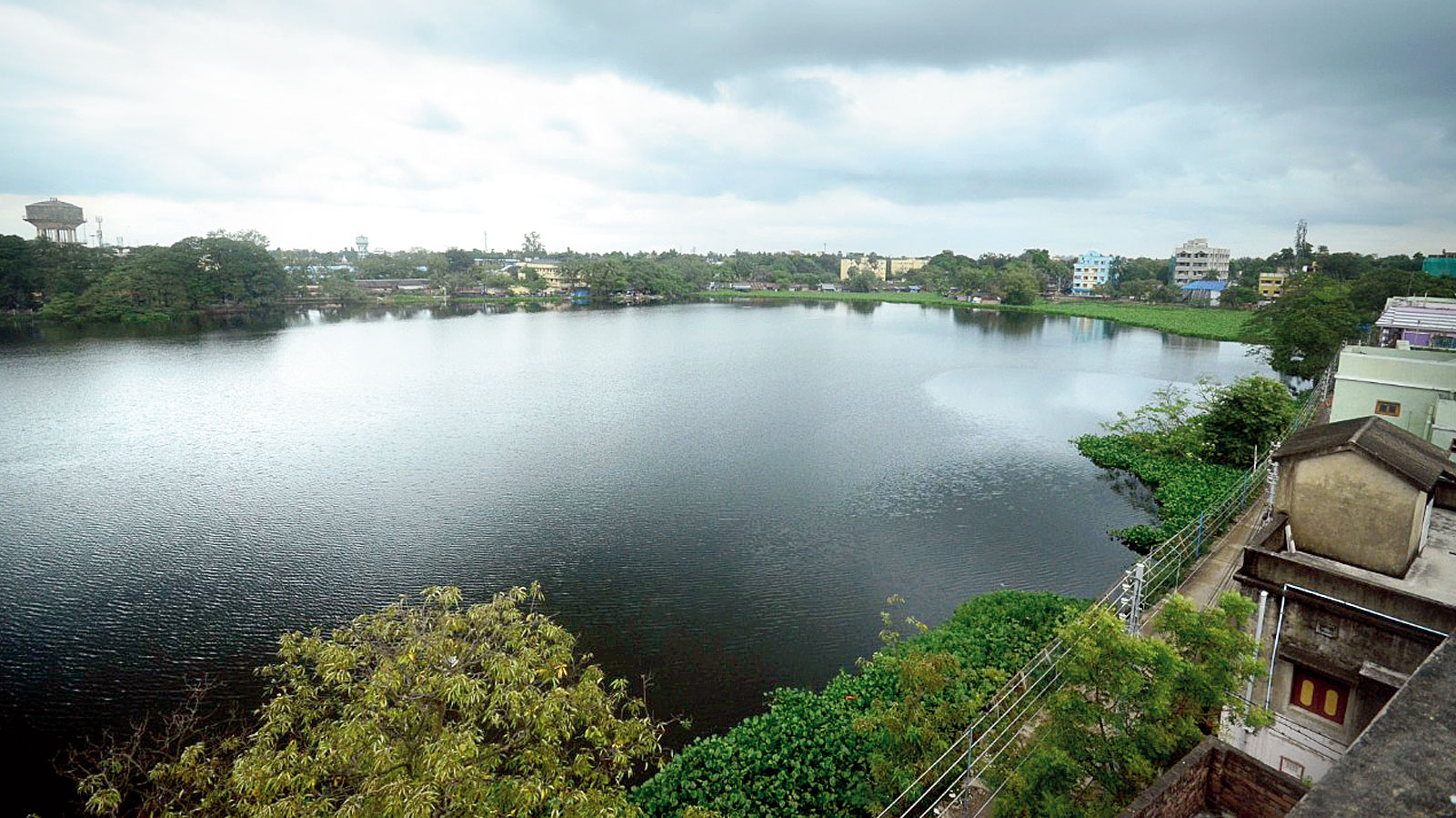Santragachhi Jheel, one of the last remaining nesting places of wintering waterfowl amid a growing sprawl of concrete, could have its guests dropping out for the second consecutive year after losing most of its hyacinth cover in an overdone cleaning drive.
Neither the forest department nor the Howrah Municipal Corporation would admit to unscientifically cleaning out the sprawling lake that has over the years struggled to maintain the ecological balance necessary for local and trans-Himalayan species to survive there.
For those who look forward to the magical sight of hundreds of birds frolicking in the water, the sight of Santragachhi Jheel shorn of its life-sustaining hyacinth islands yet again is a frustrating one.
The cleaning had started before Durga Puja and so far there has been no sign of the authorities working to a plan, according to a member of Calcutta’s birding community.
“The eastern portion of the lake has been cleaned and I didn’t see any island there during my last visit. Islands should be created in the area that is cleaned rather than making one in a corner,” said Prosenjit Dawn, a birder whose house is not far from the lake.
Dawn said the pattern of cleaning suggested that little thought had been given to the more crucial task of creating hyacinth islands for the birds to rest and find food in.
The turnout of winter migrants last year had been low because of delayed and unscientific cleaning. If water hyacinth is removed just when the migration season starts, birds are likely to find the environment disturbing enough to skip it altogether.
“The standard practice is to make several islands of hyacinth across the lake. The islands must be large and strong so that they don’t disintegrate and a large number of birds can huddle together,” Dawn said.
Shubhankar Patra, who has been birding and spreading awareness about conservation for decades, said that if birds weren’t able to nest in the lake in large numbers this year too, it would be disastrous for Santragachhi Jheel as an urban bird habitat and a destination for nature lovers.
“I don’t know how many birds will come, if at all, without an adequate number of hyacinth islands to host them. This lake is a veritable treasure because so many migratory waterfowl species come to a place so close to Calcutta (around 13km from Esplanade),” Patra said.
The winter bird count at Santragachhi Jheel, ringed by houses and adjacent to a busy railway station, is known to range between 6,000 and 10,000. Last year, the number of avian visitors dropped to 800, which the birding community blames on the cleaning overdrive that left the lake bereft of hyacinth islands.
Trans-Himalayan migrants like the Gadwall and Northern Pintail and local species such as the Purple Heron and the Bronze-Winged Jacana are among the lake’s winter attractions. The Lesser Whistling Duck, also a local migrant, has the largest population.
Arjan Basu Roy of Nature Mates, an organisation that works for conservation, said he had spoken to senior forest department officials of Howrah district about the lake not being cleaned scientifically. “I was informed that the Howrah Municipal Corporation was doing the work.”
Niranjita Mitra, the divisional forest officer of Howrah, told Metro that cleaning the lake was the municipal authorities’ responsibility. “We are not associated with the cleaning,” she said.
But Bijin Krishna, the commissioner of the Howrah Municipal Corporation, said civic workers had been cleaning only the bank of the lake.
“Our brief is to clean the bank and ensure that no garbage is dumped in the water. We are not clearing the hyacinth.”
The best time to watch birds at Santragachhi is early morning, when they return to the lake to rest. Flocks of them fly out during late afternoon in search of food. “These birds rest during the day, which is why they need the hyacinth islands,” Patra said.

A hyacinth-filled corner of the lake that has not been cleaned yet. Experts say islands of hyacinth should be scattered across the lake for birds to have enough places to roost in. Picture courtesy Prosenjit Dawn











